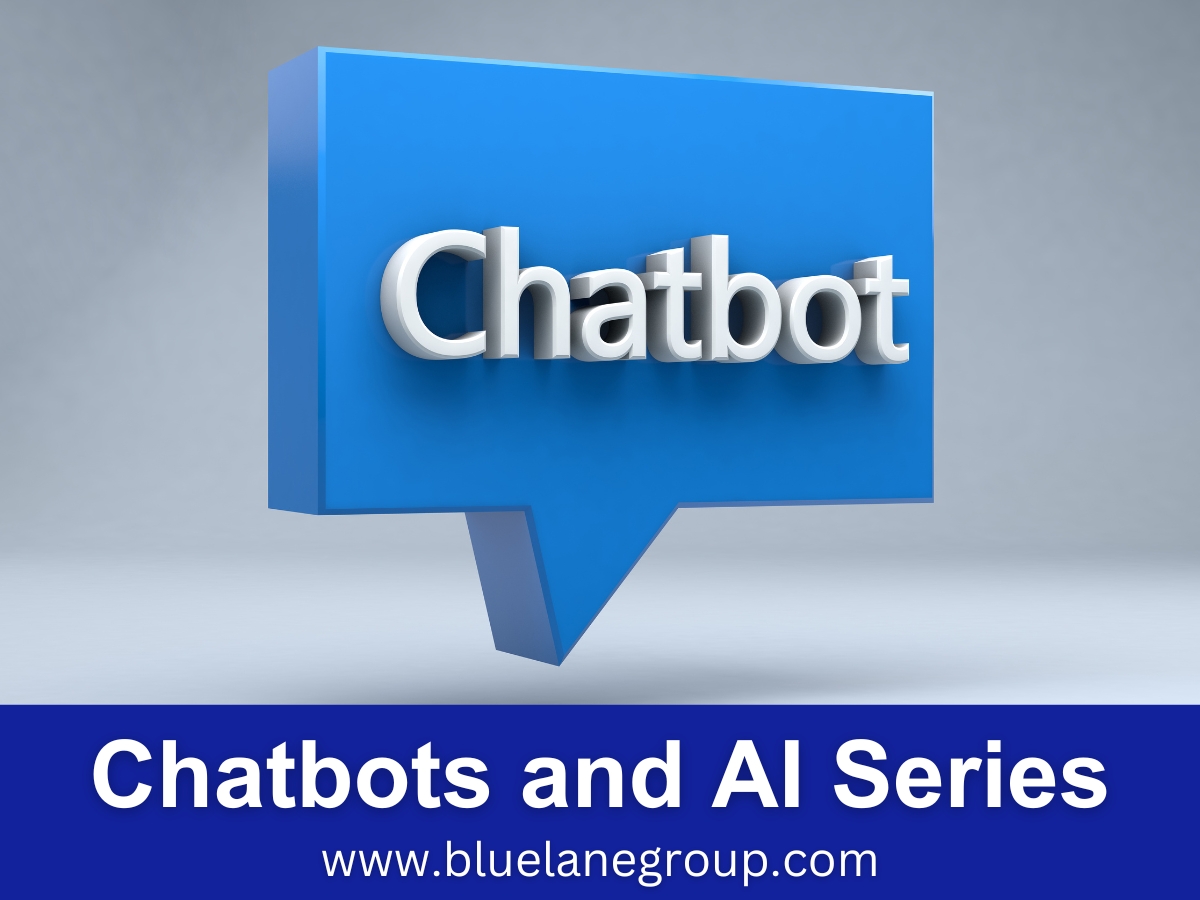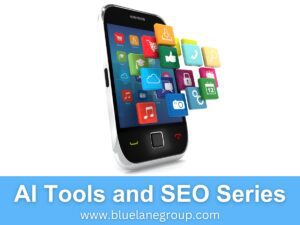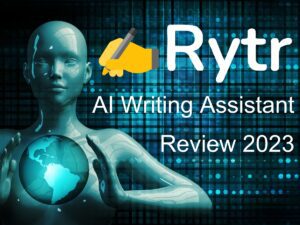This guide dives deep into omnichannel chatbots and their transformative impact on modern customer engagement. We’ll uncover their essence, real-world implementations, and pivotal role in creating seamless, integrated experiences across multiple channels in today’s interconnected digital ecosystem.
Quick Recap – For the Time-Conscious Reader
- Omnichannel chatbots are revolutionizing how businesses engage with customers, ensuring consistent and personalized interactions across all touchpoints. It’s not just about efficiency; it’s about creating a holistic customer journey. These AI-powered assistants bridge the gaps between various platforms, ensuring that brands resonate uniformly and powerfully irrespective of the interaction channel.
- In the digital-first world, adopting omnichannel chatbot strategies isn’t a luxury—it’s a necessity. This isn’t just a fleeting trend; it’s the new gold standard. By weaving omnichannel chatbot insights into your brand strategy, you position your business as a frontrunner, always meeting customers where they are and ensuring every interaction is memorable and effective.
Welcome to the second Blue Lane Group article in the Best Chatbots for Customer Service: Blueprint for Success in 2023 series. These posts examine the essential chatbot topics of customer service automation, exploring how chatbots revolutionize interactions, enhance user satisfaction, and redefine the benchmarks for excellence in modern customer-centric businesses.
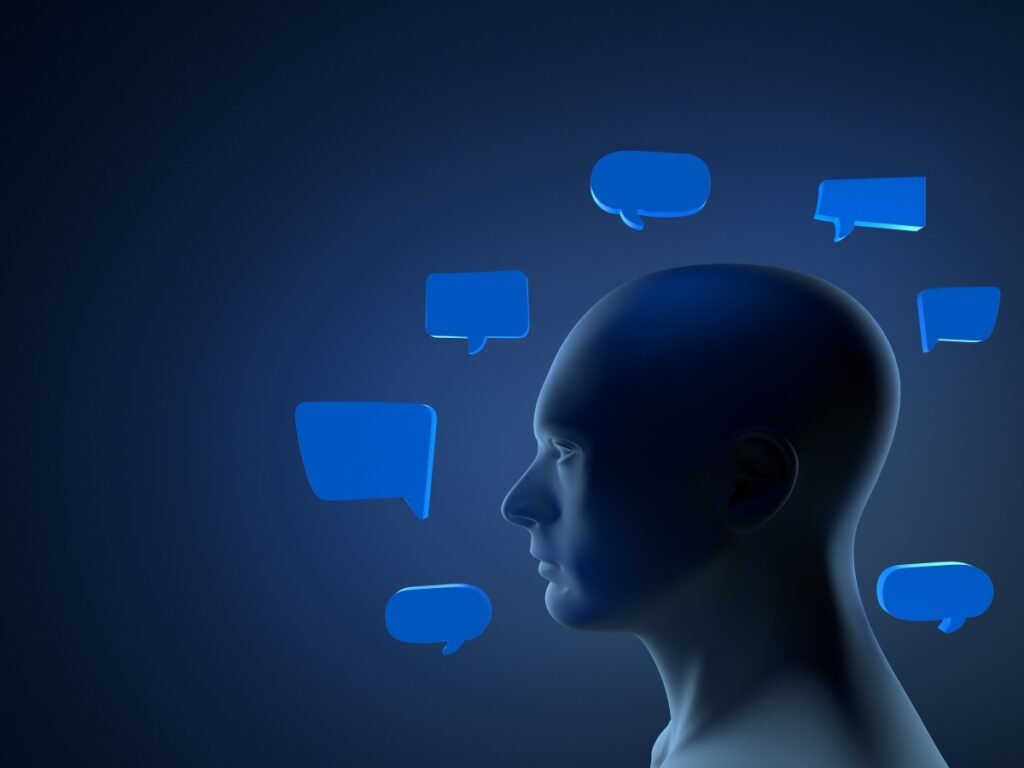
Disclosure: The digital products mentioned in this article are highly regarded in the marketplace and are endorsed by the Blue Lane Group staff. We may earn a commission at no additional cost if you purchase through the provided links.
Table of Contents
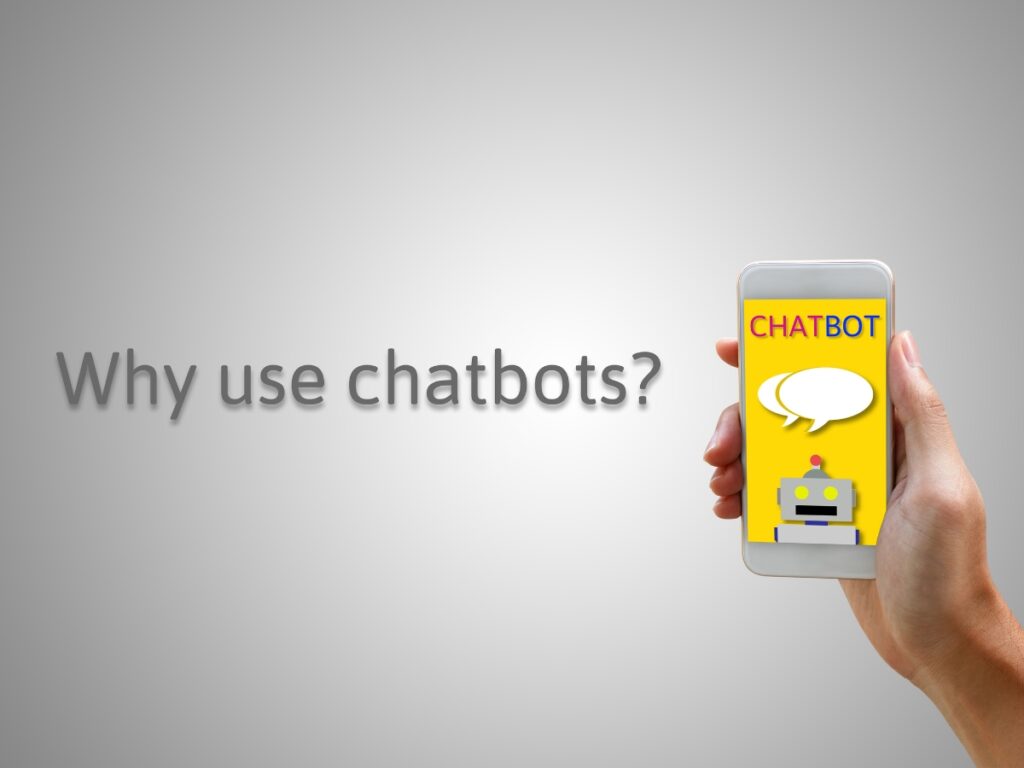
Introduction: The Era of Omnichannel Chatbots
In an interconnected, digital-first world, consumers expect seamless experiences across platforms. Enter omnichannel chatbots. These intelligent virtual assistants have transformed the landscape by providing consistent user interactions on websites, mobile apps, and social media platforms.
Leveraging tools like MobileMonkey and Rasa X, businesses can synchronize chatbot experiences across channels, ensuring users receive unified, context-aware responses no matter their point of engagement. This integration elevates customer satisfaction and solidifies brand presence in the digital sphere.
Understanding the Omnichannel Approach
The omnichannel approach is more than just a buzzword in today’s rapidly evolving digital age; it’s a transformative strategy businesses adopt to provide a unified and cohesive customer experience across various touchpoints.
Whether customers interact with a brand through its website, mobile app, social media, or even in a physical store, the omnichannel approach ensures that its messaging, design, and objectives are consistent. It’s about creating a seamless integration between online and offline experiences, ensuring customers don’t feel any jarring differences when switching between channels.
What is Omnichannel Customer Engagement?
Omnichannel customer engagement is the strategy of interacting with customers across multiple platforms, devices, and touchpoints in a consistent and integrated manner. Instead of treating each channel—email, social media, a mobile app, or a brick-and-mortar store—as an isolated silo, omnichannel engagement acknowledges that today’s consumers move fluidly between channels.
It prioritizes the customer’s journey and ensures that at every touchpoint, from initial contact to post-purchase support, the experience is smooth and unified. Tools like Intercom, Zendesk Chat, and MobileMonkey have become pivotal in executing this approach effectively.
Omnichannel vs. Multichannel: Key Differences
While both omnichannel and multichannel strategies involve engaging customers on multiple platforms, they differ in their core philosophies and execution. A multichannel approach means a business is on various channels, like a physical store and an online shop.
However, these channels operate separately and may not provide a consistent experience. On the other hand, an omnichannel approach ensures that these multiple channels are integrated. For instance, a customer might start a conversation with a brand’s chatbot on Drift on their website and continue it seamlessly on Botsify via Facebook Messenger without missing a beat.
Significance of Integrated Customer Experience
While both omnichannel and multichannel strategies involve engaging customers on multiple platforms, they differ in their core philosophies and execution. A multichannel approach means a business is on various channels, like a physical store and an online shop. However, these channels operate separately and may not provide a consistent experience.
On the other hand, an omnichannel approach ensures that these multiple channels are integrated. For instance, a customer might start a conversation with a brand’s chatbot on Drift on their website and continue it seamlessly on Botsify via Facebook Messenger without missing a beat.

Unveiling the Power of Omnichannel Chatbots
In the ever-evolving digital landscape, omnichannel chatbots are revolutionary tools that bridge the gap between brands and consumers. These AI-driven platforms operate across multiple channels, ensuring that wherever a customer chooses to interact, they’re met with consistent and instantaneous responses.
Whether answering queries on a website, assisting with bookings on a mobile app, or providing support through social media, these chatbots work tirelessly to enhance user experience.
Platforms like WotNot and Tars are perfect examples of how brands leverage this technology to be present, responsive, and efficient across the board.
Definition & Benefits of Omnichannel Chatbots
An omnichannel chatbot is a digital assistant designed to engage users across multiple platforms coherently and integrated. Unlike standard chatbots that operate on a single channel, these bots ensure uniformity in their interactions, irrespective of the forum. The benefits are manifold:
- Consistency: Whether on Twilio Autopilot via SMS or Chatfuel on Facebook Messenger, the customer receives the same level of service and information.
- 24/7 Availability: These bots, tools like Aivo and Drift, ensure round-the-clock customer service without human intervention.
- Cost-Efficiency: Businesses can significantly reduce customer service costs by automating responses and handling large queries.
- Personalized Engagement: With the ability to gather data across channels, these bots can offer tailored solutions, product recommendations, and more.
- Streamlined Operations: Brands can integrate various platforms into one unified system, making managing and analyzing customer interactions easier.

How Chatbots Drive Engagement Across Platforms
Engagement in the digital era goes beyond mere interactions; it’s about creating meaningful and memorable experiences. Chatbots, especially the omnichannel variants, play a pivotal role in this. They initiate conversations, answer queries in real time, and provide personalized solutions, enhancing the user’s engagement with the brand.
For instance, LiveChat may engage a user on a website, guiding them through product selections. Later, the same user might receive follow-up recommendations on MobileMonkey via social media, ensuring continuity.
These bots also gather valuable insights from each interaction, allowing brands to continually refine their engagement strategies, harnessing the power of tools like Botpress and Kommunicate.
Product Spotlight: Intercom, MobileMonkey, Zendesk Chat
- Intercom:
- Definition: Intercom is a versatile customer messaging platform that bridges the gap between businesses and their clients across various channels.
- Value Add: It offers real-time chat, automates marketing, and provides comprehensive customer support, making customer interactions smooth and effective.
- Key Features: With robust features such as targeted onboarding, feedback collection, and integrations with various tools, it’s a one-stop solution for businesses aiming for improved customer engagement.
- MobileMonkey:
- Definition: A premier chatbot platform explicitly designed for marketers, MobileMonkey streamlines lead generation and client engagement through various channels, including Facebook Messenger.
- Value Add: It assists businesses in growing their contact list, segmenting their audience, and promoting real-time sales without the overhead of manual interactions.
- Key Features: With its omni-chat technology, companies can send blast messages, create chatbot funnels, and automate customer service.
- Zendesk Chat:
- Definition: As a live chat solution, Zendesk Chat enables real-time conversations, helping businesses forge stronger relationships with their clients.
- Value Add: This tool improves customer satisfaction by ensuring they don’t have to wait to get answers to their pressing questions.
- Key Features: Features like proactive chat, automated triggers, and extensive analytics make it a must-have for businesses focused on customer-centric strategies.

Seven Pillars of Omnichannel Chatbot Strategies
A successful omnichannel chatbot strategy in digital interactions rests on seven fundamental pillars. These cornerstones ensure that businesses not only meet but exceed customer expectations:
- Holistic View of the Customer: Understanding the customer’s journey across every touchpoint is essential, ensuring seamless interactions regardless of the platform.
- Consistency: Whether a customer interacts with a brand via Tars on a website or Botsify on a mobile app, the information and experience should remain uniform.
- Personalization: Using bots like WotNot, businesses can harness customer data to tailor interactions, making them more relevant and engaging.
- Data Integration: Platforms such as Bold360 help integrate data across channels, ensuring the bots are always informed and up-to-date.
- Scalability: As businesses grow, so should their chatbot strategies. Tools like Botpress and Twilio Autopilot allow for easy scalability, ensuring efficiency at every stage.
- Feedback Loop: Continuous improvement is critical. By actively seeking feedback and using tools like Kommunicate, companies can refine their strategies for better results.
- Security & Compliance: Ensuring customer data’s safety is paramount. Platforms like Drift and Freshchat prioritize data security, instilling trust in users.
Unified Experience Across Platforms
In today’s fast-paced digital world, customers expect a unified experience regardless of how or where they interact with a brand. This means a query initiated on Chatfuel via Facebook should be effortlessly picked up and continued on LiveChat on a website.
This seamless transition is the hallmark of a successful omnichannel strategy. Businesses utilizing platforms like Aivo or Zendesk Chat ensure that every interaction, be it a complaint, a query, or feedback, is consistent and continuous, regardless of the platform. By delivering a unified experience, businesses boost customer satisfaction and foster brand loyalty.
Spotlight: Aivo, Freshchat, Bold360
- Aivo:
- Definition: Aivo champions customer service automation, empowering businesses to deliver instant responses across various channels using AI-driven chatbots.
- Value Add: Aivo ensures that customers get answers instantly, 24/7, improving satisfaction and boosting engagement.
- Key Features: Their solutions, such as Agentbot, provide real-time solutions, learn from customer interactions, and can effortlessly handle multiple languages and queries.
- Freshchat (by Freshworks):
- Definition: Freshchat is a messaging software that allows businesses to engage with leads and users dynamically across platforms.
- Value Add: Designed for sales and customer engagement teams, Freshchat turns conversations into conversions by capturing and qualifying leads.
- Key Features: It offers bots, campaign messaging, integrated email channels, and event tracking to ensure every conversation is contextually relevant.
- Bold360 (by LogMeIn):
- Definition: This AI-powered digital engagement solution streamlines business and customer relationships.
- Value Add: Bold360 offers a harmonized customer experience, seamlessly integrating AI and human agents.
- Key Features: With its robust AI engine, Bold360 can offer real-time insights, proactive chat, and even video chat to bring customer interactions to life.
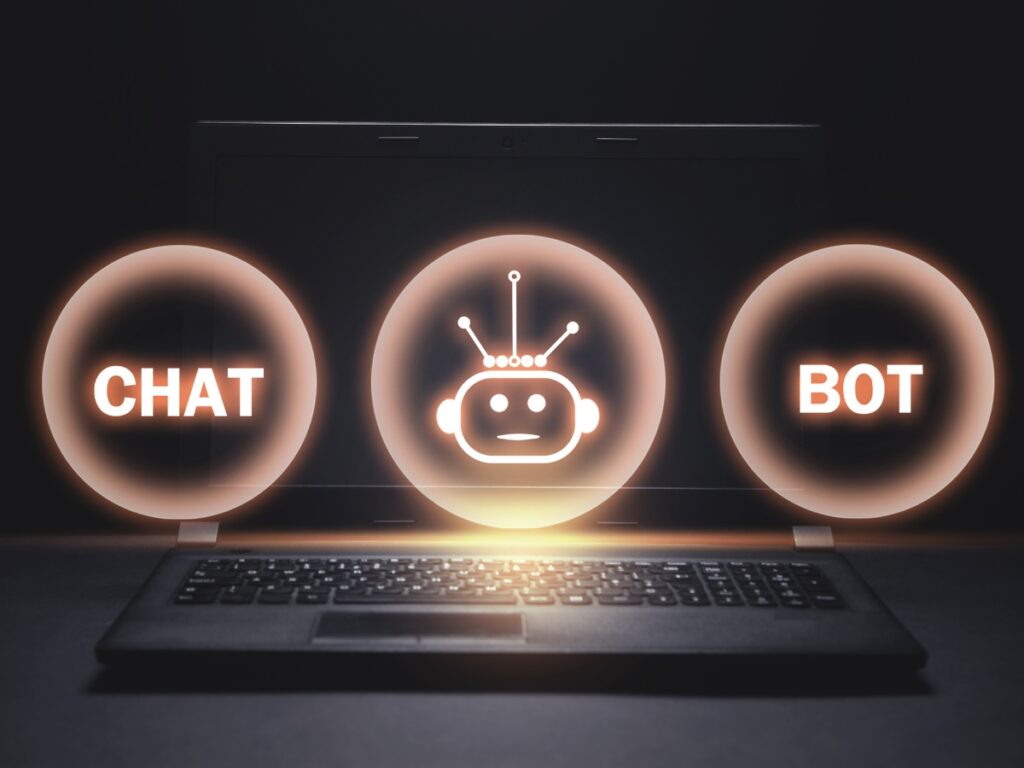
Ensuring Presence on Customer’s Preferred Channels
Today’s consumers are not restricted to a single channel. They browse products on websites, seek reviews on social media, and place orders through mobile apps. Hence, businesses need to be omnipresent. For instance, Kommunicate can help companies to stay connected on websites, while MobileMonkey optimizes Facebook Messenger interactions.
Adopting tools like Twilio Autopilot ensures firms are present on SMS platforms. The mantra is simple: Be where your customers are. Providing consistent and instantaneous responses, irrespective of the channel, builds trust and promotes brand loyalty.
Spotlight: Drift, LiveChat
- Drift:
- Definition: Drift stands out as a conversational marketing platform, making businesses buying experiences enjoyable and memorable.
- Value Add: It helps businesses connect with the best leads in real-time, transforming how they sell and market.
- Key Features: Drift offers chatbots, email playbooks, and videos to personalize and accelerate the sales cycle.
- LiveChat:
- Definition: LiveChat offers online customer service software with online chat, helping businesses establish an immediate connection with customers.
- Value Add: Businesses can swiftly solve problems, answer questions, and build brand trust with real-time chats.
- Key Features: From speed and efficiency to customizations and robust reporting, LiveChat ensures businesses can engage, assist, and convert customers seamlessly.

Harnessing Personalization for Chatbot Interactions
In today’s digital age, a one-size-fits-all approach no longer cuts it. Customers crave personalized experiences. With their data-driven algorithms and AI-powered insights, Chatbots have made it easier for businesses to offer bespoke interactions. Personalized chatbot interactions go beyond addressing a user by their first name.
It’s about understanding past behaviors, purchase histories, and even the nuances of their queries—this level of personalization results in more engaging conversations and improved customer satisfaction. Chatbots like Tars and Kommunicate help tailor responses based on user preferences, leading to more meaningful exchanges.
Spotlight: Botsify, WotNot
- Botsify:
- Definition: Botsify is a platform for creating AI chatbots for websites and messaging apps.
- Value Add: What sets Botsify apart is its emphasis on personalized conversations. With its drag-and-drop template, businesses can tailor chat flows to suit their clientele.
- Key Features: It offers features like human takeover, innovative AI training, and integrations with platforms like Shopify, making the customer journey more connected.
- WotNot:
- Definition: WotNot offers an AI chatbot platform to boost lead generation and automate customer support.
- Value Add: With WotNot, businesses can enhance customer interactions with personalized, automated chat sequences.
- Key Features: From pre-built templates for various industries to multi-language support and analytics, WotNot ensures businesses can create, deploy, and refine their chatbots effortlessly.
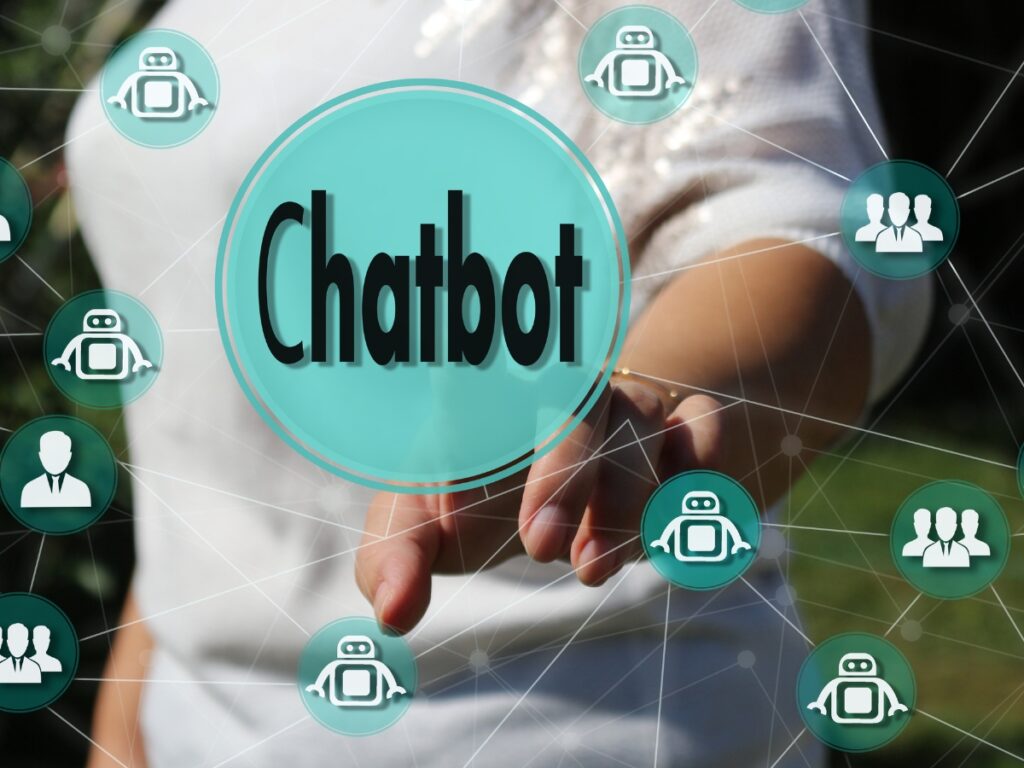
Chatbots in Data Collection & Analysis
The strength of chatbots extends beyond just conversations. They are a goldmine of data. Every interaction, every query, and every feedback is a piece of valuable information. This data, when analyzed, offers businesses insights into customer behaviors, preferences, and pain points.
For instance, if many users ask a chatbot about a specific product feature, it might indicate a gap in the information provided on the website. Tools like Botpress and Twilio Autopilot facilitate interactions and gather, segment, and analyze user data.
By harnessing this data, businesses can refine their products, services, and even their chatbot’s responses, ensuring they always remain in tune with their customers’ needs.
Spotlight: Botpress, Tars
- Botpress:
- Definition: Botpress is an open-source, developer-friendly platform for building chatbots.
- Value Add: It offers businesses a modular structure, meaning they can add only the needed features, ensuring faster load times and efficient functioning.
- Key Features: Its powerful natural language processing (NLP) ensures more human-like interactions. Botpress integrates seamlessly with popular tools and platforms, making it versatile and adaptable.
- Tars:
- Definition: Tars is a platform for creating interactive chatbots to improve lead generation.
- Value Add: Tars emphasizes conversation-driven experiences, aiming to replicate human interactions, leading to higher engagement and conversion.
- Key Features: With drag-and-drop builders, instant publishing, and analytics dashboards, Tars offers an end-to-end solution for businesses to harness the power of chatbots effectively.

Chatbots in Optimizing Conversions & Sales
The bottom line for many businesses is conversions and sales. Chatbots have emerged as vital tools in this arena. As the first point of contact for many customers, chatbots can guide users through product selections, answer queries, and even upsell or cross-sell products.
The immediacy of chatbot responses ensures that potential customers receive answers swiftly, reducing the chances of cart abandonment. Platforms like MobileMonkey and Twilio Autopilot integrate with e-commerce platforms, providing seamless product recommendations, payment gateways, and higher conversion rates.
Spotlight: Chatfuel, Kommunicate
- Chatfuel:
- Definition: Chatfuel is a leading platform for building chatbots on Facebook Messenger.
- Value Add: It allows businesses to reach Facebook’s massive user base, potentially leading to increased sales and engagement.
- Key Features: Businesses can set up a bot in minutes with its intuitive no-code platform. Its AI-backed responses ensure users have personalized shopping experiences, increasing chances of conversions.
- Kommunicate:
- Definition: Kommunicate is a live chat and chatbot platform to enhance customer support and sales.
- Value Add: The platform bridges the gap between bot interactions and human agents, ensuring optimal customer service.
- Key Features: With rich messaging, a dashboard for agents, and integrations with popular services, Kommunicate offers a holistic solution for businesses keen on improving conversions and customer service.

Prioritizing Customer-Centric Chatbot Strategies
In the age of the customer, a business’s success often hinges on customer satisfaction. Chatbots can be pivotal in enhancing the customer experience if designed correctly. A customer-centric chatbot strategy goes beyond answering queries.
It’s about anticipating needs, offering personalized solutions, and ensuring the bot’s tone and responses align with the brand’s voice. Such a strategy places the customer at the heart of every decision.
By integrating platforms like Zendesk Chat and WotNot, businesses can ensure that their chatbots deliver valuable interactions, resulting in loyal customers and positive word-of-mouth.
Spotlight: Twilio Autopilot
Twilio Autopilot:
- Definition: Twilio Autopilot is a robust platform for building, training, and deploying AI-powered chatbots and IVRs.
- Value Add: With its ability to integrate across multiple channels like voice, SMS, and messaging apps, Autopilot offers businesses a truly omnichannel experience.
- Key Features: It boasts a natural language understanding engine that can be trained to understand various user intents, making interactions smoother. Additionally, its seamless handoff feature ensures that when a bot can’t solve a problem, the issue is transferred to a human agent, ensuring consistent user satisfaction.

Enhancing In-Person Experience with Chatbots
In the age of digitalization, the human touch is often missed. However, chatbots can be tuned to simulate the in-person experience online.
By being available 24/7, chatbots can address issues and answer queries instantaneously, mimicking the immediate response one might expect in a physical store. With the correct script and tone, advanced chatbots can make customers feel like they’re interacting with a human.
Integrating platforms like Aivo and Bold360 can help businesses craft chatbots that offer personalized product suggestions, remember past interactions, and even use humor or empathy, creating an experience that closely resembles an in-person interaction.
Spotlight: WotNot, Chatfuel
- WotNot:
- Definition: WotNot offers businesses a no-code platform to build AI-powered chatbots tailored for sales, support, and marketing.
- Value Add: Through its intuitive interface, businesses can craft bots that drive more leads, engage users effectively, and offer superior customer support.
- Key Features: With integrations across various platforms, WotNot ensures its chatbots can function everywhere. Its analytics dashboard offers insights into chatbot performance, helping businesses refine their strategies for better results.
- Chatfuel:
- Definition: As previously mentioned, Chatfuel stands out for its prowess in crafting Facebook Messenger bots.
- Value Add: Beyond its primary functionality, Chatfuel aids businesses in tapping into Facebook’s vast user base, potentially skyrocketing engagement and sales.
- Key Features: Its drag-and-drop interface ensures even those without a technical background can build effective chatbots. With plugins for everything from quizzes to e-commerce, Chatfuel’s bots can be tailored to various business needs.
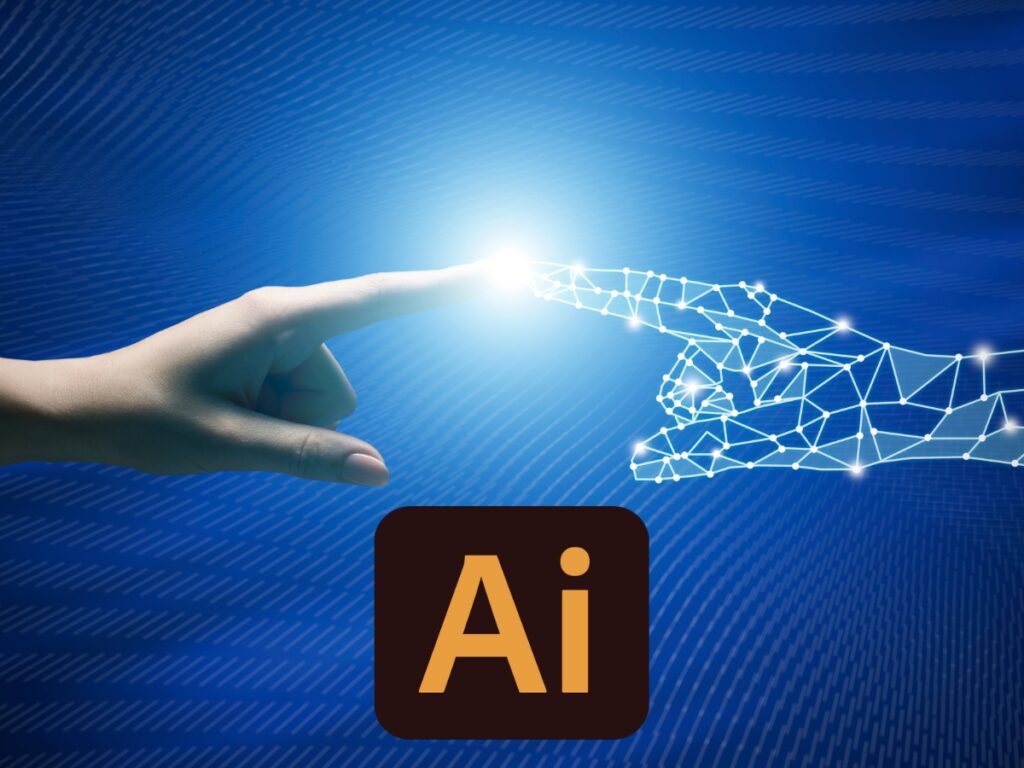
Omnichannel Chatbot Success Stories
Throughout the business world, companies large and small have recognized the benefits of chatbots and have integrated them into their omnichannel strategies. Their implementations showcase improved engagement, increased sales, and an enhanced customer experience.
From tech giants like Apple to disruptive startups in the retail sector, the proof of chatbot success is evident. Three brands have seamlessly merged their omnichannel approach with chatbot innovation.
Apple’s Integrated Omnichannel Chatbot Experience
When we think of Apple, innovation and customer-centricity, immediately come to mind. Their use of chatbots is no exception. While Apple’s primary customer service platform remains Genius Bar and human-operated live chat, the company has started leveraging chatbot technology for preliminary troubleshooting.
These chatbots, synced across devices, allow users to diagnose issues or find information about products without human intervention. The chatbots are designed with Apple’s iconic user-centric approach, ensuring a seamless experience, whether the customer interacts through an iPhone, MacBook, or Apple TV.
Warby Parker & Chatbots in Retail
Warby Parker, a revolutionary name in the eyewear industry, has always been at the forefront of blending digital and in-person retail experiences. Their chatbot implementation is a testament to this strategy.
By deploying chatbots on their website and through Facebook Messenger, Warby Parker ensures customers receive instant responses to queries about products, order status, or store locations. Furthermore, their chatbot can guide users through a series of questions, helping them select the perfect pair of glasses.
This integration of chatbots provides a cohesive experience, whether a customer is shopping online or looking to visit a brick-and-mortar store.
Mbank’s Personalized Chatbot Interactions
Mbank, one of the most innovative banks in Central and Eastern Europe, has turned to chatbots to elevate their customer service. Their chatbot system, available through their website and mobile app, assists clients in various tasks, from checking account balances to initiating wire transfers.
What sets Mbank’s chatbot apart is its ability to learn from past interactions. Over time, the chatbot becomes more attuned to a particular user’s needs, offering personalized suggestions and streamlining transactions. This dynamic adaptation ensures efficiency and adds a personal touch to every customer’s banking experience.

Technologies Powering Omnichannel Chatbots
Chatbots stand out in the ever-evolving digital communication landscape due to their ability to engage users across multiple platforms. The magic behind these bots is a blend of technologies that enable seamless, intelligent, and adaptive interactions. From AI to machine learning and natural language processing to integrative APIs, the gears driving chatbot success are numerous and nuanced.
Embracing Tech for Better Chatbot Interactions
Chatbots, especially those functioning omnichannel, cannot rely on basic scripts alone. The real power comes from leveraging state-of-the-art technologies. Artificial Intelligence ensures chatbots can understand and process complex queries.
Machine Learning allows these bots to grow brighter with each interaction, tailoring responses based on patterns and feedback. Natural Language Processing (NLP) ensures the bot can comprehend human language in all its irregularities, making interactions more genuine.
Moreover, integration technologies ensure that no matter where a user communicates from—be it a website, a messaging app, or an email—the chatbot experience remains consistent.
Product Spotlight: Innovative Features
Several chatbot platforms have spearheaded the inclusion of groundbreaking features, setting themselves apart in the market:
- Botpress is renowned for its open-source architecture, allowing businesses to tailor chatbot functionalities to their needs.
- Tars: Focuses on chatbot-driven campaigns with capabilities that link chatbot interactions directly to ROI and conversion metrics.
- Intercom: A hybrid platform, blending live chat with chatbot interactions, perfect for businesses aiming for a balanced human-bot communication approach.
- MobileMonkey: Offers multi-platform chatbot integrations, ensuring consistent user experience across web, SMS, and various messaging apps.

Future of Omnichannel Chatbots
Omnichannel chatbots are not just a fleeting trend but are reshaping how businesses communicate. Looking ahead, we can anticipate even more integrative tools, allowing chatbots to function across various platforms.
As Augmented Reality (AR) and Virtual Reality (VR) become more commonplace, chatbots might soon assist users in these immersive digital spaces. Additionally, advancements in AI will ensure chatbots not only answer queries but also predict user needs, offering solutions even before a problem arises.

Conclusion: Achieving Consistent Engagement
In today’s interconnected world, the expectation is clear: consumers desire consistent, meaningful, and instant engagement across all platforms. The rise of omnichannel chatbots addresses this expectation head-on, bridging the gap between businesses and their clientele. Through innovative technologies and strategic integrations, these chatbots offer experiences that resonate on a personal level, regardless of where the interaction begins.
As we’ve journeyed through the intricacies of omnichannel chatbots, from their underlying technologies to their real-world applications, a singular theme emerges—adaptability. Whether it’s Aivo offering intelligent responses, Zendesk Chat streamlining customer service, or Chatfuel personalizing user interactions, adaptability ensures the seamless user experience transition from one platform to another.
The future is bright for businesses willing to embrace this new era of customer engagement. By implementing and refining omnichannel chatbot strategies, they can unlock unparalleled customer loyalty, improved satisfaction rates, and significant ROI boosts. The challenge lies not in questioning the efficacy of omnichannel chatbots but in choosing the right strategies and technologies that resonate most with their audience.
In closing, as the digital landscape continues to evolve, so will the tools we use to navigate it. But one thing remains certain: the desire for genuine, consistent, and meaningful interactions will always be a cornerstone of successful customer engagement. And in this realm, omnichannel chatbots have proven themselves indispensable.
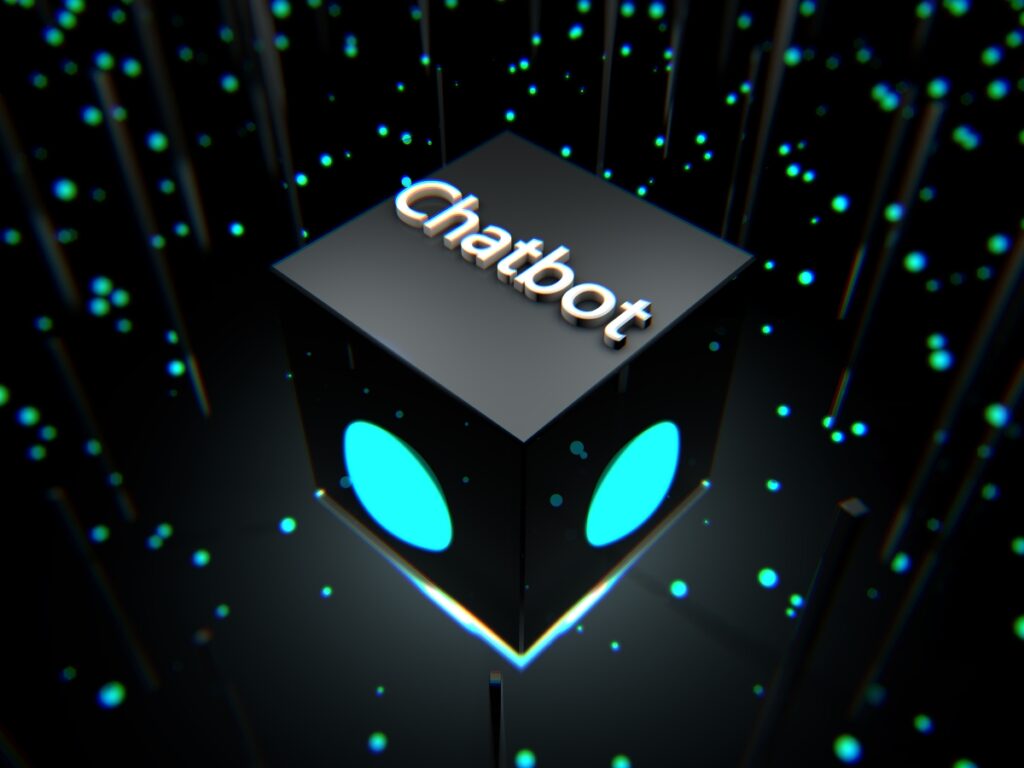
You Might Also Like
If you enjoyed this article and received value from it, check out the other Blue Lane Group articles in the Best Chatbots for Customer Service: Blueprint for Success in 2023 series:
- Chatbot ROI: Unlock Unmatched Profits with Top 5 Strategies for Optimization
- Omnichannel Chatbots: Unlock Consistent Engagement with 7 Best Practices
- Chatbot KPIs: 10 Essential Metrics to Drive Optimal Results
- Multilingual Chatbots: Break Language Barriers with 8 Leading Solutions
- Enterprise AI Chatbot Solutions: 7 Key Tools to Supercharge Your Business
- Mastering Chatbot Training: 7 Strategies for Optimal User Engagement
- Chatbot APIs: 6 Leading Options for Seamless Functionality
- Chatbot Scripts: 9 Proven Strategies to Boost Conversions and Engagement
- Rule-Based Chatbots: Drive Consistent Responses with Top 9 Benefits
- Chatbot Success Metrics: Unlock Optimal Performance with Top 10 Insights
- Chatbot Analytics: Drive Excellence with 10 Essential Tools
- Mastering Interactivity: Top 10 Chatbot Frameworks Explored
- Chatbots in Retail: 7 Winning Strategies for Elevated Customer Engagement
- Chatbots for Lead Generation: 6 Best Practices to Transform Your Funnel
- Chatbot Integrations: 6 Essentials for Enhanced Productivity and Operations
- Chatbot UX: Enhance Engagement with These 8 Vital Principles
- Chatbot Security: 7 Essentials to Safeguard Your Business
- Chatbot Development Services: 7 Must-Knows to Boost Your ROI
- Chatbots in Healthcare: 6 Leading Innovations Revolutionizing Patient Care
- NLP for Chatbots: Top 6 Techniques Transforming Chat Experiences
- Benefits of Chatbots in Customer Service: 7 Key Sales Boosters
- 7 Essential Social Media Chatbots for Unmatched Engagement
- Building Chatbots Powered by AI: 5 Proven Techniques for Epic Profits


